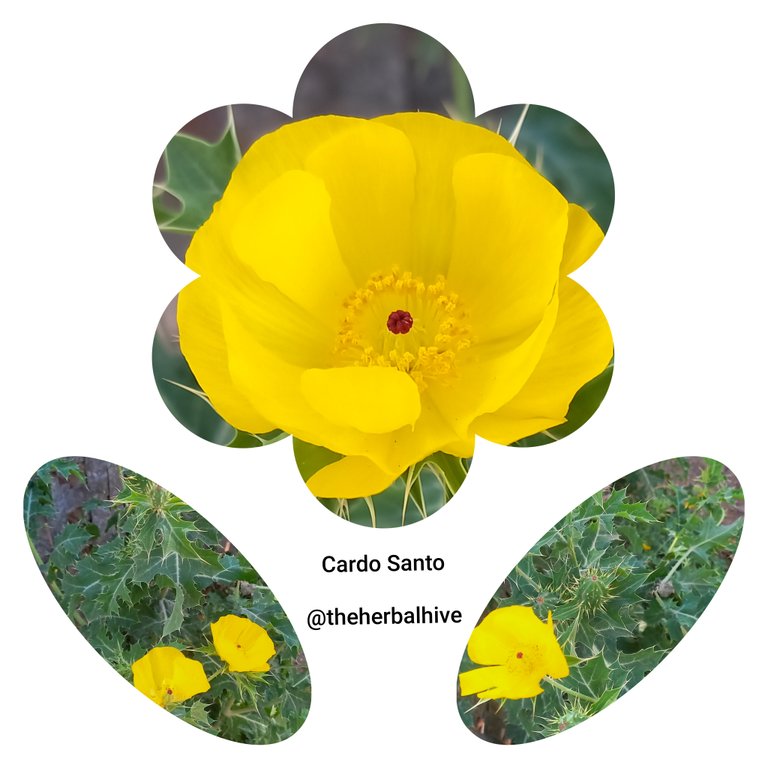
Les traigo los poderes del Cardo Santo. La herbolaria cubana no tiene al Cardo Santo entre las plantas usadas comunmente para sanar el cuerpo. Es una planta que nace en período seco del año y desaparece. Queridos amigos @theherbalhive, es para mi un inmenso placer mostrar mis modestos saberes sobre las hierbas. Mi familia tiene en sus pilares la cultura herbolaria, aún cuando la ciencia ha puesto los medicamentos a nuestro servicio.
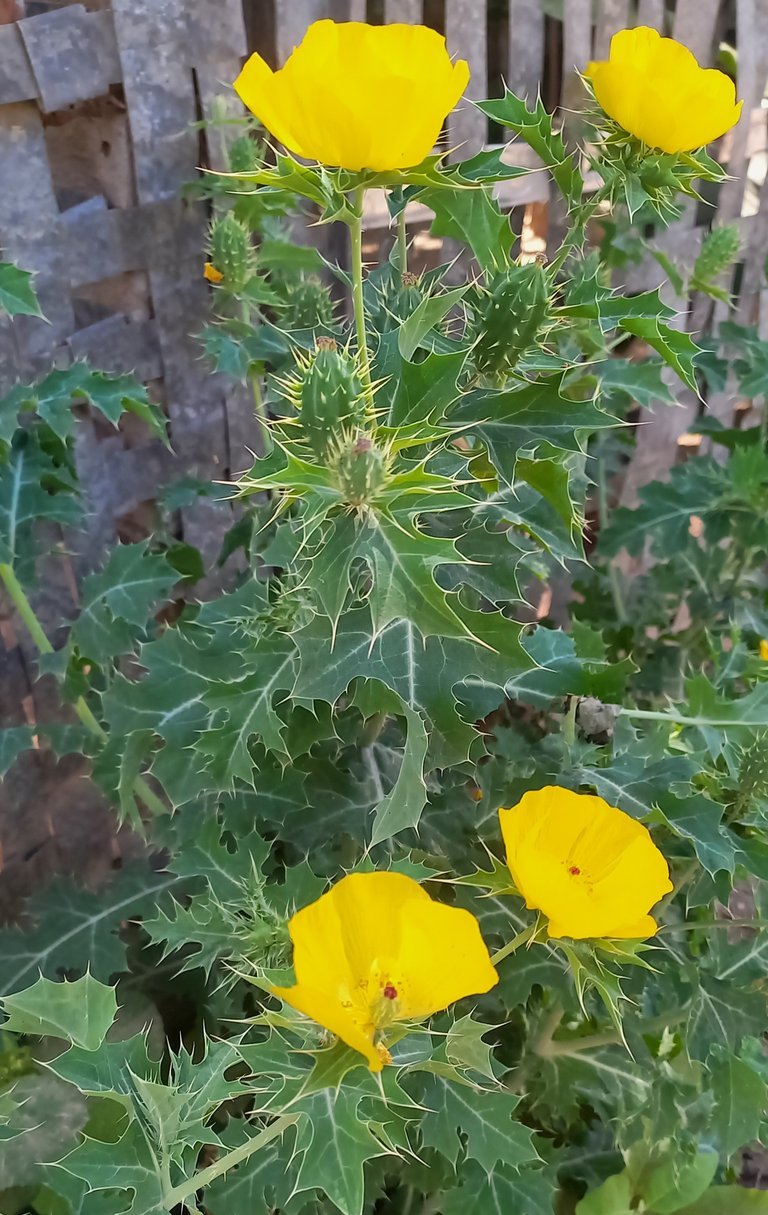
El Cardo Santos posee una flor hermosa, una de las pocas flores que sobrevive en cualquier patio, quizás se debe a lo difícil o incómodo de la manipulación por las espinas que posee tanto en hojas como tallo.
El Cardo Santo es conocido en otras regiones por:
Alcachofa, calcitrapa lanosilla, cardo, cardo bendito, cardo blanco, cardo-huso áspero, cardo santo, centaurea bendita, centaurea sudorífica, centaurea, vellosa, panicardo, tangarnina. Pueden profundizar más en esta fuente https://es.m.wikipedia.org/wiki/Cnicus_benedictus
Aunque esta planta crece en tierra arenosa, su aspecto es hermoso, de un verde esmeralda y flores amarillas brillantes con pétalos superpuestos.
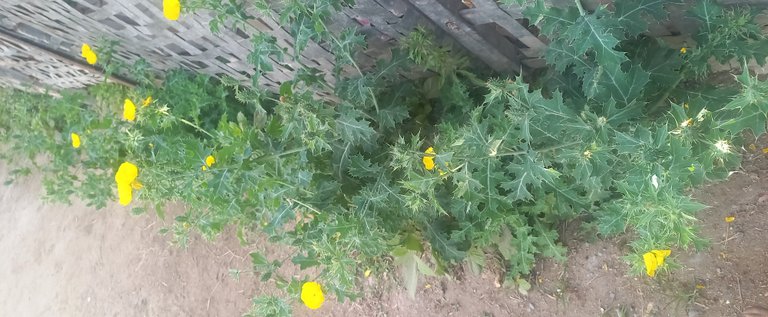
El Cardo Santo posee propiedades antimicóticas. Apropiada además como diuréticos, pero esta vez les mostraré como aplicar en zonas donde existen heridas o lesiones infectadas por bacterias u hongos. Por todos es conocido que el consumo de medicamentos antifúngicos afecta el higado, el páncreas y los riñones, por tanto es una alternativa a valorar.
Le mostraré cómo manipular el Cardo Santo. Tomamos una tijera y cortamos solo el tramo necesario y lo ubicamos sobre un paño o papel de manera que no tengamos contacto con sus espinas y superficies ásperas.
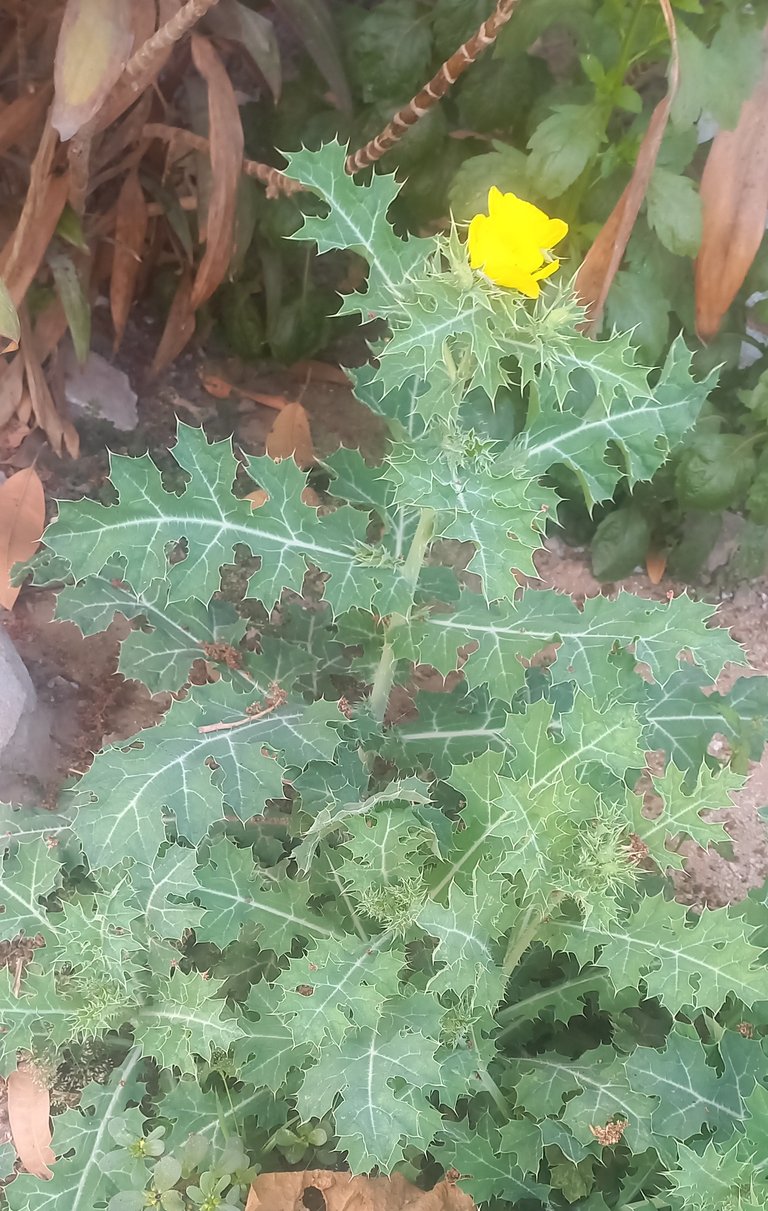 |  | 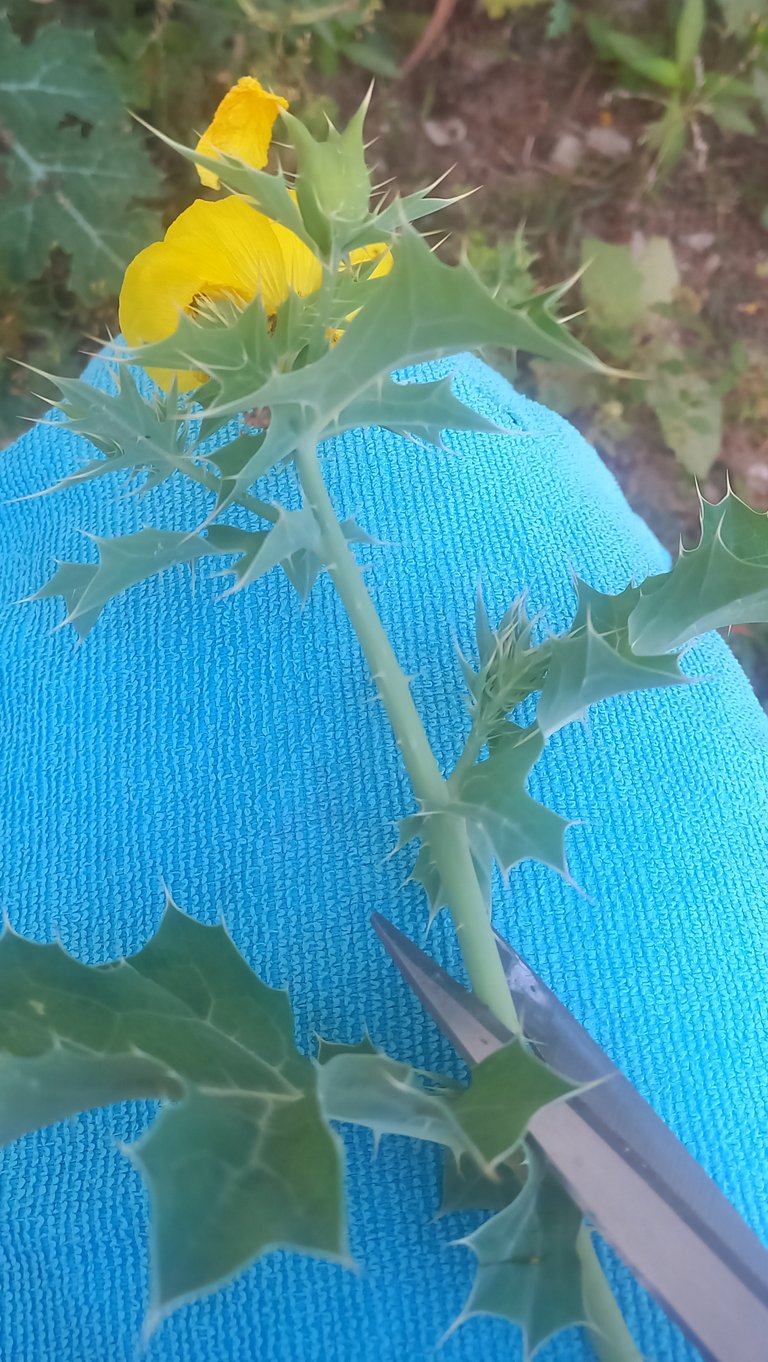 |
|---|
Llevamos a un lugar cómodo y picamos las hojas en porciones pequeñas. El contacto con la savia del Cardo Santo provoca cierto escozor. Es sumamente amargo, muchos amantes de las hierbas le tienen fe a los productos amargos para la cura de bacterias y hongos.
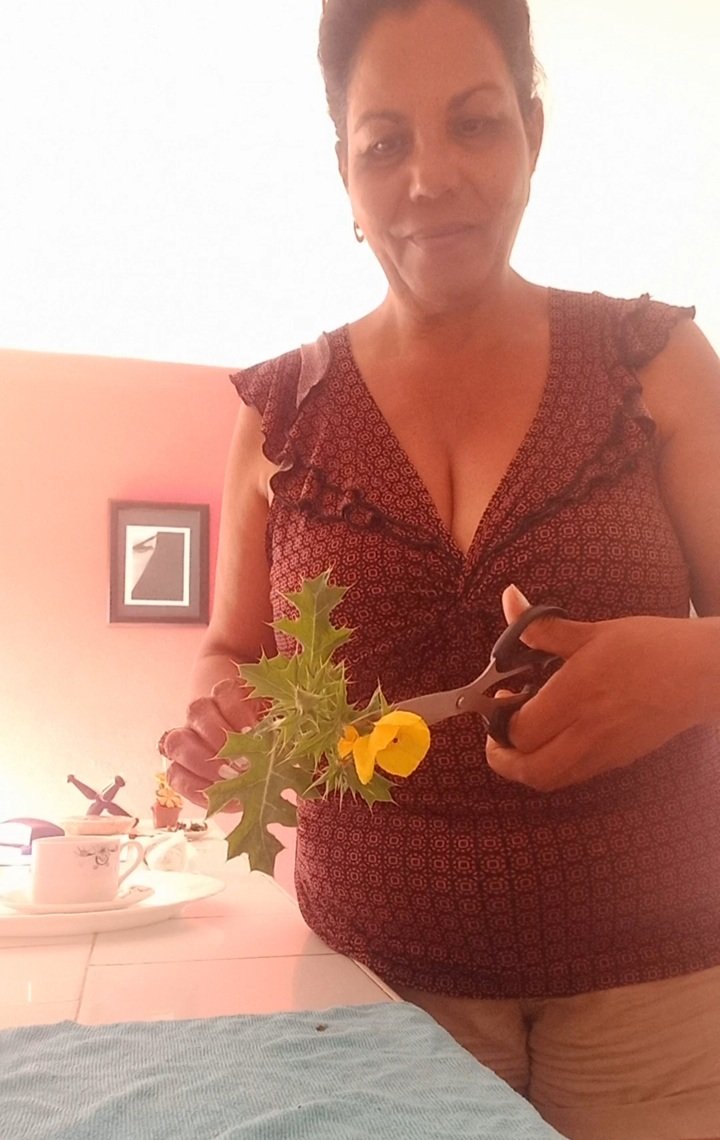 ! ! | 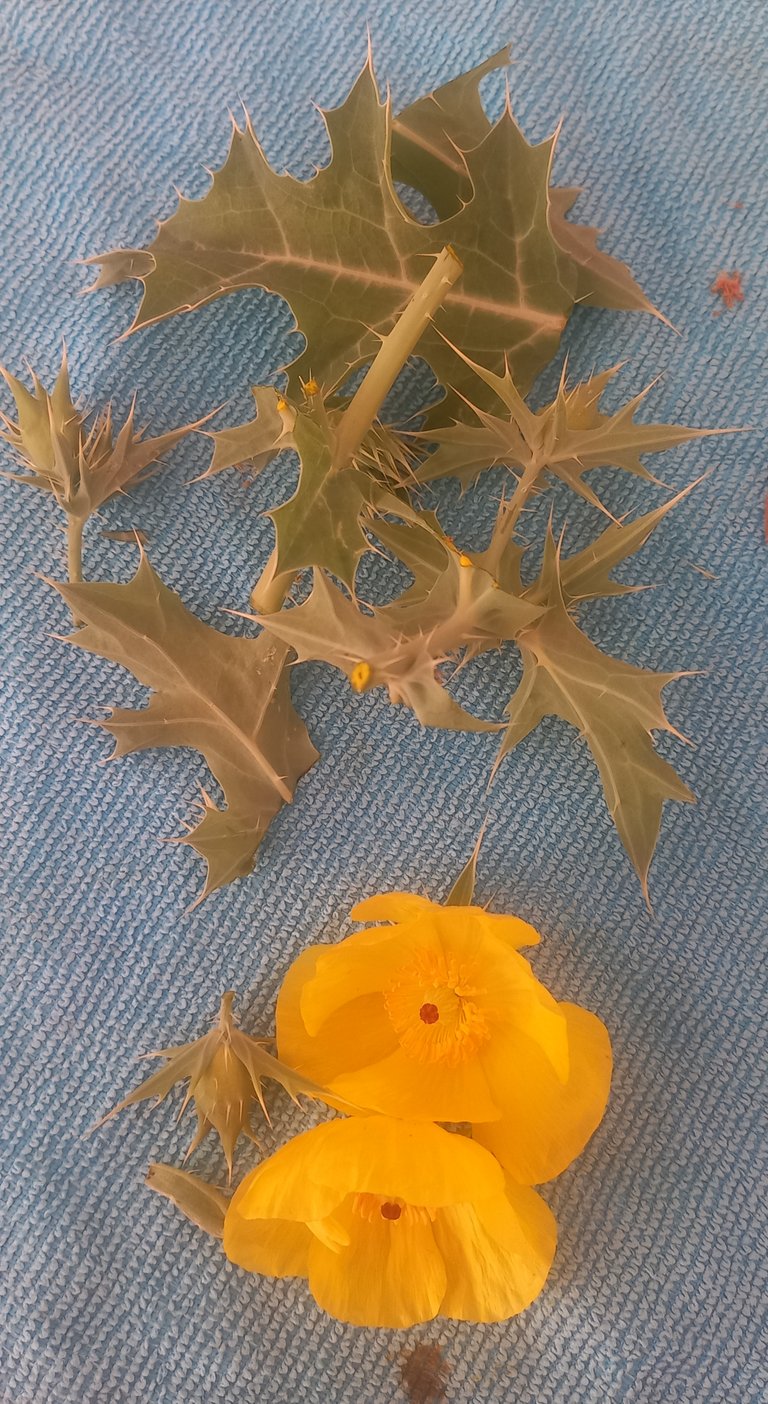 | 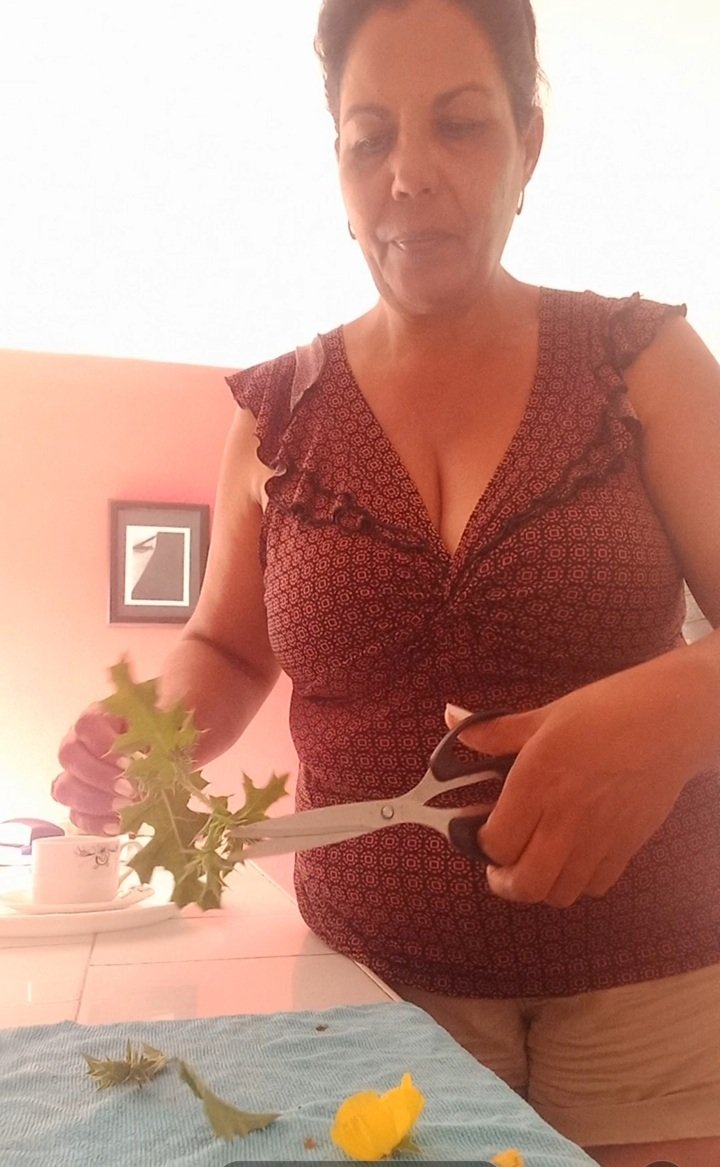 |
|---|
Ponemos una cazuela al fuego con un litro de agua y agregamos las porciones se la planta y dejamos hervir. Desmontamos y dejamos refrescar.
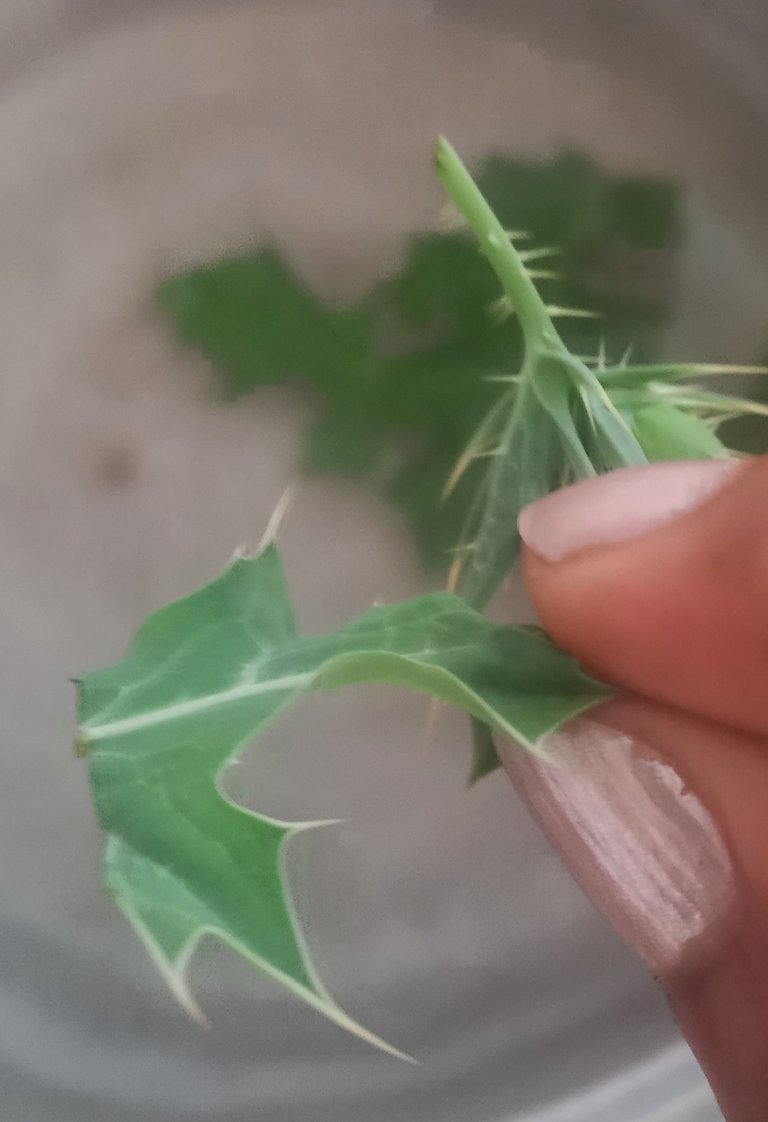 | 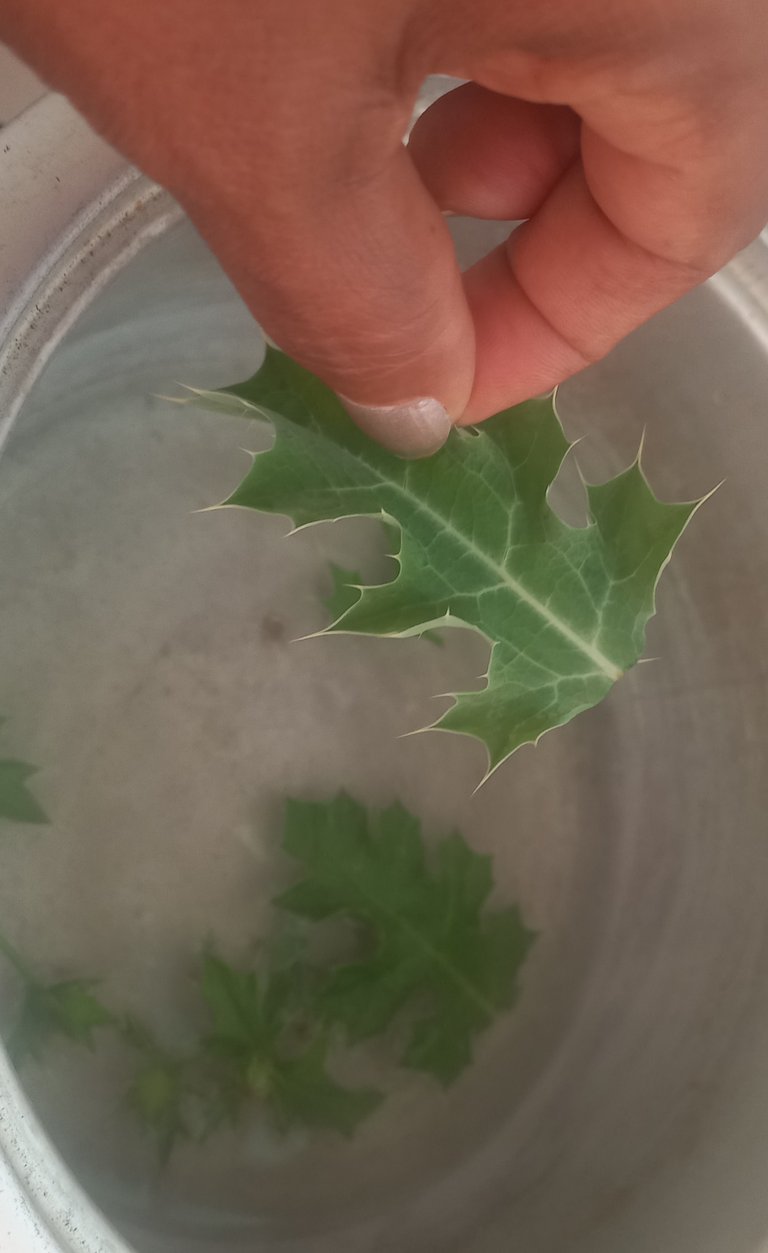 | 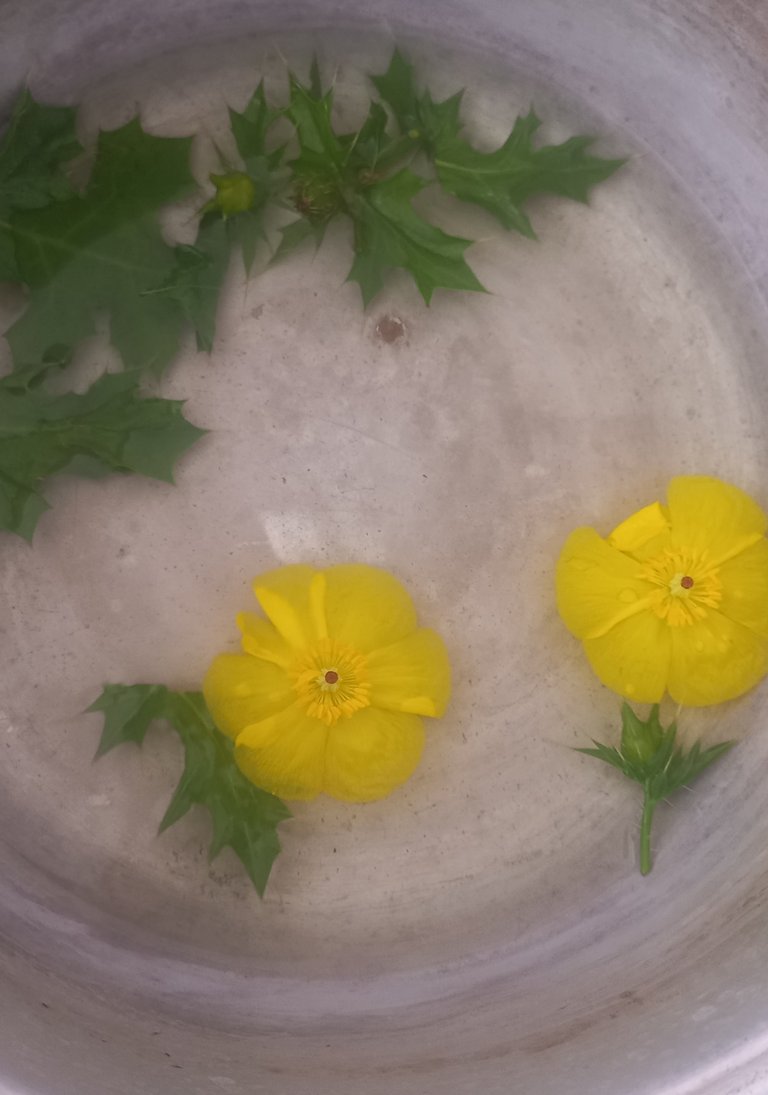 |
|---|
Recomiendo pasar el líquido por una maya o colador, para evitar las molestias de las pequeñas espinas que puedan desprenderse de las hojas.
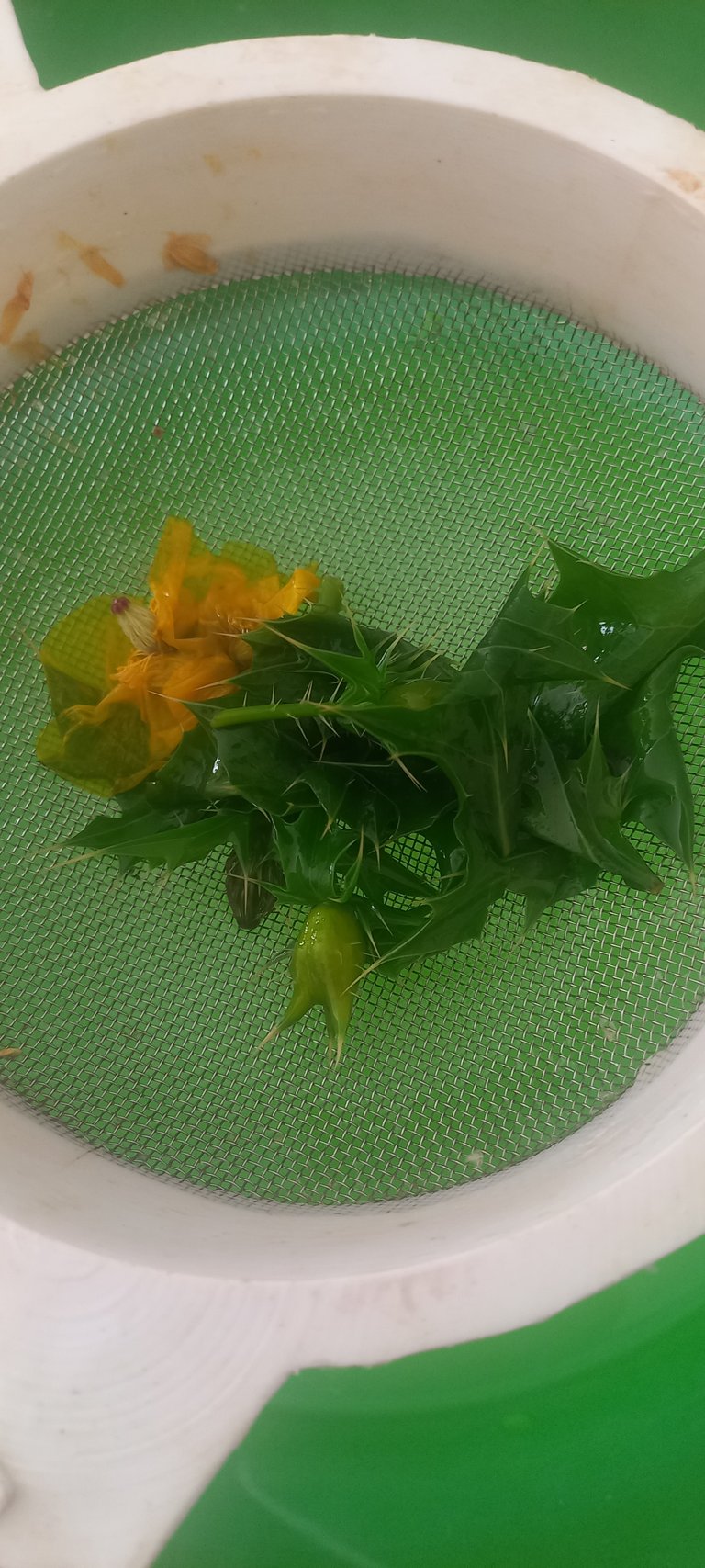
Agregamos una cuchadita de sal al agua y podemos aplicar en forma de fomento con un paño embebido en la infusión, por tres minutos, sobre la parte infestada. El paño no debe ponerse nuevamente sobre en contacto con el agua pues puede provocar reenfección por lo que es conveniente usar toallas de papel, algodón o hervir el paños para su nuevo uso.
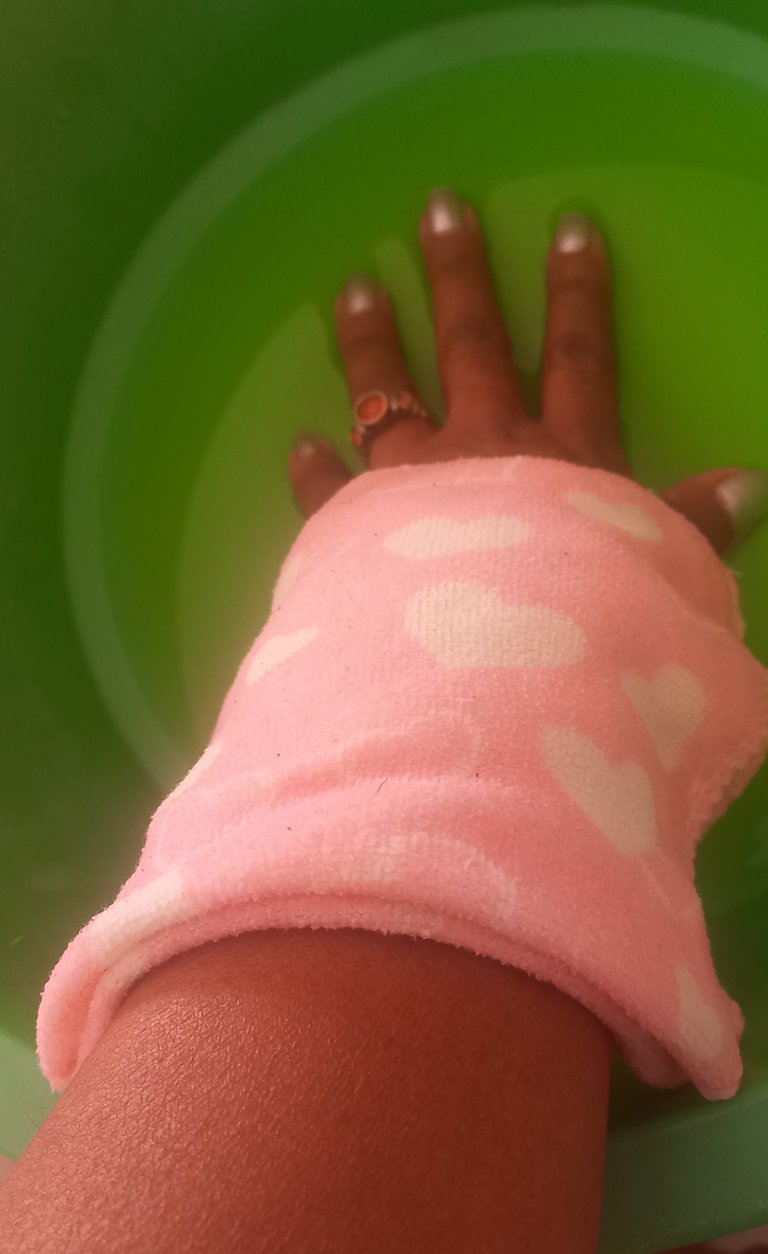
También puede lavarse la zona infectada sin aplicar toalla para el secado o hacer baños de asientos una práctica muy usada por nuestros antepasados. El baño de asiento permite el contacto más directo de la infusión de Cardo Santo sobre la piel infestada.
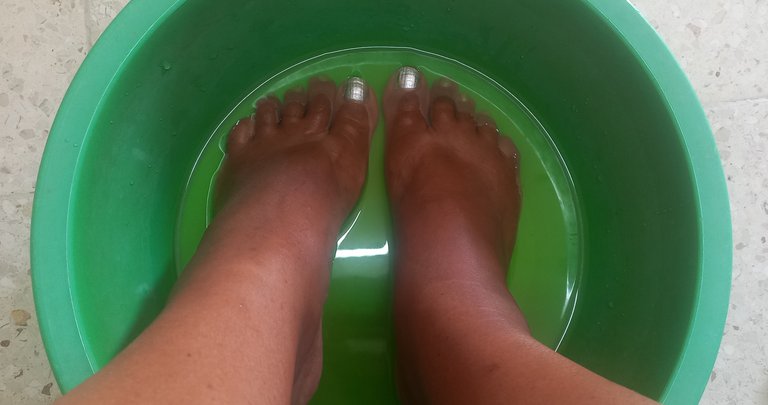
Es recomendable hacer estas terapias herbolarias aunque no existan lesiones visibles pues la prevención es una opción oportuna ante cualquier molestia, sobre todo si padecemos diabetes, linfangitis o psoriasis.
Las manos y los pies son zonas del cuerpo en contacto con posibles focos infectados y debemos evitar.
Aquí te dejo esta planta milagrosa, agradeciendo a esta comunidad @theherbalhive la oportunidad de interactuar con ustedes hivers amantes de las hierbas.
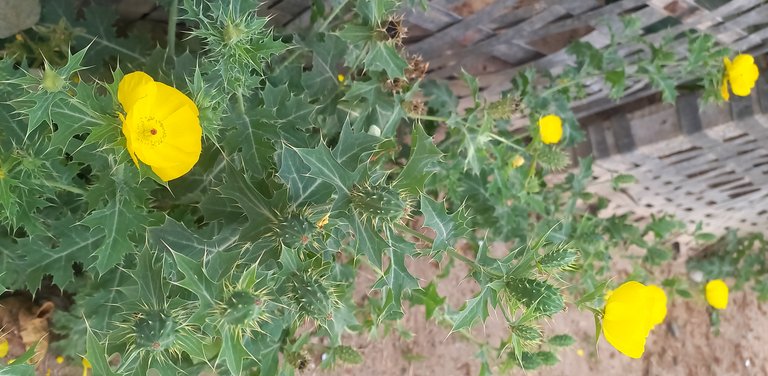

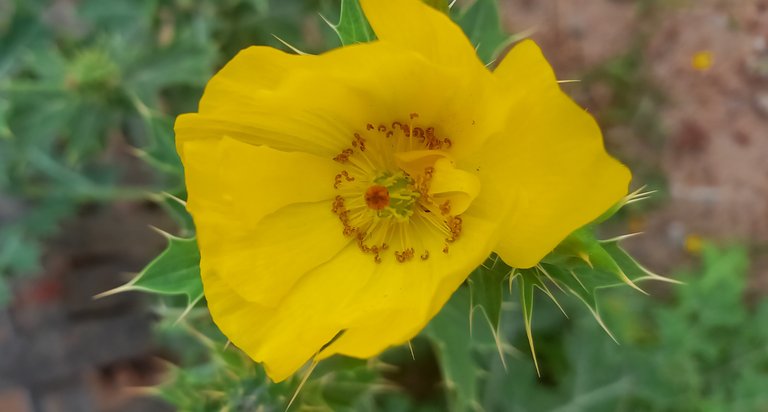
This post has been written and documented by me, it does not contain AI. The photos used are my property
Holy Thistle, the enigma of herbs

Dear friends @theherbalhive, it is an immense pleasure for me to show my modest knowledge about herbs. My family has herbal culture as its pillars, even when science has put medicines at our service.
I bring you the powers of Holy Thistle. Cuban herbalism does not have Holy Thistle among the plants commonly used to heal the body. It is a plant that is born in the dry period of the year and disappears.

The Santos Thistle has a beautiful flower, one of the few flowers that survives in any patio, perhaps due to the difficult or uncomfortable handling due to the thorns it has on both the leaves and the stem.
Although this plant grows in sandy soil, it looks beautiful, with emerald green and bright yellow flowers with overlapping petals.The Cardo Santo is known in other regions for: Artichoke, lanosilla calcitrapa, thistle, blessed thistle, white thistle, rough spindle thistle, holy thistle, blessed knapweed, sudorific knapweed, downy knapweed, panicardo, tangarnine. You can go deeper into this source https://es.m.wikipedia.org/wiki/Cnicus_benedictus

Holy Thistle has antifungal properties. Also suitable as diuretics, but this time I will show you how to apply in areas where there are wounds or lesions infected by bacteria or fungi.
It is known to all that the consumption of antifungal medications affects the liver, pancreas and kidneys, therefore it is an alternative to consider. I will show you how to manipulate the Holy Thistle. We take scissors and cut only the necessary section and place it on a cloth or paper so that we do not have contact with its thorns and rough surfaces.
 |  |  |
|---|
We take it to a comfortable place and chop the leaves into small portions. Contact with the sap of the Holy Thistle causes a certain stinging sensation. It is extremely bitter, many herbal lovers swear by bitter products for curing bacteria and fungi.
 ! ! |  |  |
|---|
We put a saucepan on the fire with a liter of water and add the portions of the plant and let it boil. We disassemble and let it cool.
 |  |  |
|---|
I recommend passing the liquid through a mesh or strainer, to avoid the inconvenience of the small thorns that may detach from the leaves.

We add a teaspoon of salt to the water and we can apply it as a promotion with a cloth soaked in the infusion, for three minutes, on the infested part. The cloth should not be put in contact with water again as it can cause re-infection, so it is advisable to use paper towels, cotton, or boil the cloth for its new use.

You can also wash the infected area without applying a towel to dry it or do sit baths, a practice widely used by our ancestors. The sitz bath allows more direct contact of the Cardo Santo infusion on the infested skin.

It is advisable to do these herbal therapies even if there are no visible lesions because prevention is a timely option in the event of any discomfort, especially if we suffer from diabetes, lymphangitis or psoriasis.
The hands and feet are areas of the body in contact with possible infected sources and we should avoid them. Here I leave you this miraculous plant, thanking this community @theherbalhive for the opportunity to interact with you herb-loving hivers.



This post has been written and documented by me, it does not contain AI. The photos used are my property

¡Interesante lo que nos traes en esta ocasión!
¡Totalmente novedoso para mí!
¡Gracias!
Gracias a ti por leer. Si con esta planta, hermosa y fuerte a la vez
¡Pondré en práctica tu receta sin dudas!
que hermosa la flor! la habia visto en los senderos por aqui. gracias por compartir!!
Es linda si. Gracias
Muy interesante. Y necesario en estos días donde es obligatorio recurrir a la medicina natural tradicional. Gracias por la explicación y las recomendaciones
Si que resuelve querida. Un abrazo
!BBH